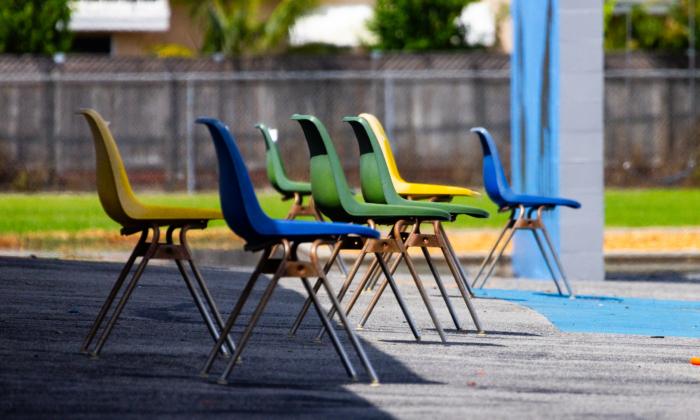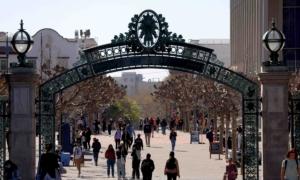A recent report found that enrollment has fallen by 6 percent over the past decade and projected it will drop an additional 12 percent by 2034.
Public schools are experiencing a decline in enrollment, continuing a trend that began in 2013 and will likely worsen over the next 10 years, according to the Public Policy Institute of California.
A June
report by the institute found that enrollment in California public schools has fallen by 6 percent over the past decade, and projected it will drop an additional 12 percent by 2034.
The Los Angeles area experienced the largest decline from 2013 to 2023, with enrollment dropping by 15.2 percent, followed by the Sierra Nevada region in eastern and central California and the Bay Area, with 9.5 percent and 8.2 percent dips, respectively.
Total public student
enrollment in California is now around 5.85 million, down from 6.23 million in the 2013–14 school year.
The shift has many causes. Thousands of families left California during and after the COVID-19 pandemic. Between April 2020 and July 2022, about 700,000 more people moved out of California than those that moved in, according to
U.S. Census data.
Another factor is the declining birth rate. In 2023, the Public Policy Institute reported that California had reached its lowest
birth rate in more than 100 years, with births falling from 613,000 annually in 1992 to 420,000 in 2021.
The enrollment decline was already underway when the COVID-19 pandemic hit in late 2019. The institute said California public schools lost 310,000 students between late 2019 and May 2023.
Also driving the decline was parents’ dissatisfaction with the education their children were receiving.
Key findings from this year’s “Californians and Education”
survey by the institute found that 47 percent of state residents “think the quality of education in the state’s K–12 public schools has gotten worse over the last few years.”
“I would say that, historically, the reasons [for pulling kids out of public school] tended to be more toward parents wanting to teach their children their own values and pass that down whether it was religious or some other reason,” said Nathan Pierce, executive director of Family Protection Ministries, a California homeschooling advocacy group founded in 1986.
More recently, Mr. Pierce told The Epoch Times he has seen a growing trend of parents pulling their children out of school not just for religious reasons, but because of what’s being taught. A
report from the Idaho Freedom Foundation and the Claremont Institute on California’s education system, for example, highlighted teachings such as restorative justice, social-emotional learning, and queer theory as examples of curricula that some parents may take issue with.
Mr. Pierce also cited bullying and the lack of quality options for special needs children as additional reasons parents might choose homeschooling.
In California, 8.6 percent of families were homeschooling in the spring of 2020, amid the pandemic, and that number stayed firm at 8.7 percent in the fall, according to
data from Johns Hopkins Institute for Education Policy. More than 59,000 students were being homeschooled in the 2020–21 school year.
As the pandemic waned, homeschool participation dropped to about 47,000 students.
Homeschooled students accounted for less than 1 percent of total California enrollment, with 80 percent of state students in public schools, 11 percent in charter schools, and 8 percent in private schools.
Because school district funding is tied to attendance, the institute advised California lawmakers to consider “potential unintended consequences” of any actions they may take to “ease the financial burdens” of districts with declining enrollment, especially if those districts are in affluent areas.
“For example, providing additional funding to declining districts would likely shift state support from inland to coastal regions, even though coastal incomes are generally higher,” the
report stated.
“In short, the state will need to carefully balance student needs across districts experiencing a wide variety of enrollment trends, from growth to decline.”
Declining enrollment has also had a real impact on teachers. Education news website EdSource
stated this spring that 100 school districts in the state sent layoff notices to 1,900 teachers, which they noted was “15 times more than the 124 that were issued last spring.”







